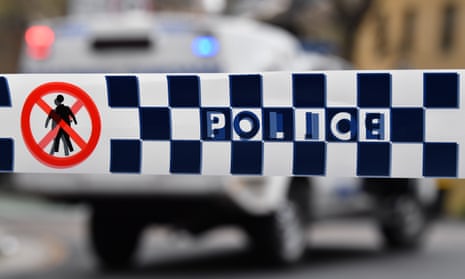New South Wales police officers are testing out the federal government’s controversial facial recognition system to access passport photos as part of criminal investigations, despite legislation governing its use not yet passing parliament.
The Australian Human Rights Commission has said that facial recognition technology should not be used for law enforcement in Australia, unless there are effective legal safeguards are in place.
State and territory police have been seeking access to millions of photos that they can then use facial recognition technology to compare to still CCTV shots and other photos as part of criminal investigations.
The federal government has been pursuing the introduction of a centralised database, known as “the Capability”, which would bring together photos collected by a range of state and federal agencies, including police charge photos, passport photos, immigration documents, and driver’s licences from across the country.
Legislation to allow the photos to be shared was rejected by the federal parliament’s joint standing committee on intelligence and security in 2019 for failing to adequately protect citizens’ rights with proper safeguards. The legislation has yet to be reintroduced.
Despite the legislation not yet passing parliament, NSW police states on its website that it is participating in “a limited (low volume) trial” of the federal government’s facial matching service, accessing photos held by the commonwealth.
Victoria, South Australia and Tasmania supply driver’s licence photos to the system, but NSW police is not able to access those at this stage. Other states and territories also plan to unlock access to their photos under an agreement reached in 2017.
NSW police states that photos from NSW driver’s licences aren’t yet available in the system and will not be “until the NSW government is satisfied that appropriate privacy and security safeguards are in place”.
The federal government has stressed the facial identification service – where one photo is compared to many – can only be used by national security, law enforcement and anti-corruption agencies, and cannot be used to investigate minor offences, or live facial recognition.
Guardian Australia understands NSW police has not yet had a match identified through the trial.
The Australian Human Rights commissioner, Ed Santow, said such a trial was “deeply concerning”.
“We at the Human Rights Commission find that deeply concerning. It is deeply concerning for the government – for any government – to proceed without a legal framework at all, in the absence of [the legislation] being reintroduced and passed.”
It comes just weeks after the Australian Human Rights Commission recommended in its landmark report on artificial intelligence and human rights that there be a ban on the use of facial recognition until there is legislation outlining what police can and cannot do, with a strong focus on protecting human rights.
“The problem with proceeding without any legislative framework at all, is that you’re left with wholly inadequate protections in a very high-risk area of use, mainly policing,” Santow said.
Quick GuideHow to get the latest news from Guardian Australia
Show

Email: sign up for our daily morning and afternoon email newsletters
App: download our free app and never miss the biggest stories
Social: follow us on YouTube, TikTok, Instagram, Facebook or Twitter
Podcast: listen to our daily episodes on Apple Podcasts, Spotify or search "Full Story" in your favourite app
It comes after News Corp tabloid the Daily Telegraph published on Saturday an interview with the head of the NSW police’s facial recognition unit, assistant commissioner Tony Crandell, who stated police wanted to be “as transparent as possible” about its use of the technology, which they realise “people are not going to agree about”.
Crandell said NSW police use PhotoTrac, a system that has been in place since 2004. The system has access to more than 1m charge photos, which police can then run comparisons against CCTV still photos. One still can bring up 100 different potential options, and officers need to examine each one closely.
The report also revealed NSW police trialled the technology on live CCTV footage at a gun show in order to identify people banned from buying guns, but it was decided pursuing the use of facial recognition on live footage was not worthwhile.
Guardian Australia requested an interview with Crandell, but it was refused by NSW police.
Samantha Floreani, the program lead at Digital Rights Watch, told Guardian Australia if police knew the public was not on board with facial recognition yet, it should not be used until there is a robust public debate and strong legal safeguards.
“We need more transparency around the kinds of technology – including facial recognition – that law enforcement are using, so that they can be held accountable, and so that the we can have a genuine public debate as to whether the use of these tools aligns with the kind of society we want to live in,” she said. “As we saw with police use of Clearview AI, a lack of transparency of the tools the police are using or trialling erodes public trust, makes it hard to understand if the technology is being used in a fair and reasonable way, and throws accountability to the wind.”
In a statement, a spokesperson for NSW police defended the agency’s use of the technology, stating it wasn’t the only piece of evidence police use.
“Traditional facial recognition technology has been used by the NSWPF since 2004 to establish and verify the identities of persons of interest for investigative purposes,” the spokesperson said. “While fingerprints and DNA remain the primary biometric source for identification, facial recognition can be used to corroborate other evidence or as a lead generator.”
Guardian Australia understands the legislation for the facial recognition technology has been finalised by the home affairs department, and could soon be reintroduced into parliament.
The department has been approached for comment.
